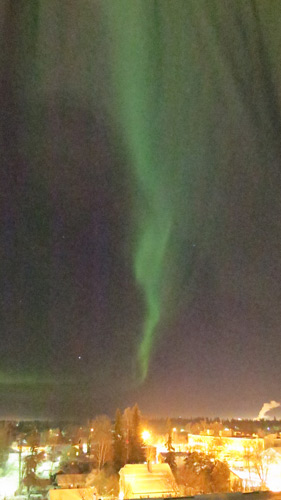Electrons Colliding in the Atmosphere
The Aurora in the air last night over our hotel room were bizarre to watch. They are a seemingly alien thing, moving and dancing thanks to the interaction between a star and the magnetic molten center of a watery rock.

The ends of the Earth are a special place, where it is possible to observe phenomena that reveal so much about our planet as a whole. The achievement of science astounds me sometimes - that so much understanding has emerged as a result of billions of individual small observations. While many stereotypes may exist in fiction of arrogant or power-mad scientists, there is something that feels uniquely humble about setting the conditions for observation, then sitting back and allowing the planet to educate you about how it works. Getting selected to be in PolarTREC was my invitation to be a part of that process, and it is so amazing to be here and getting ready to share it with the public!
Comfort in Insignificance
At home, I know my friends are stressed right now because of the impending layoffs of thousand(s) of Chicago teachers, partial government shutdowns in counties across Illinois, and gouging of social services. Those issues are all deeply important to me - but as part of PolarTREC, I feel like my job is to step outside those fights for a second and allow myself to bask in massive environmental forces and chemical processes, all invisible without instruments. It's a chance to remind myself that the total of harmful things happening to humans in Chicago is infinitesimal when compared to all the things that are happening, period.
- next >
- 1 of 3


Comments